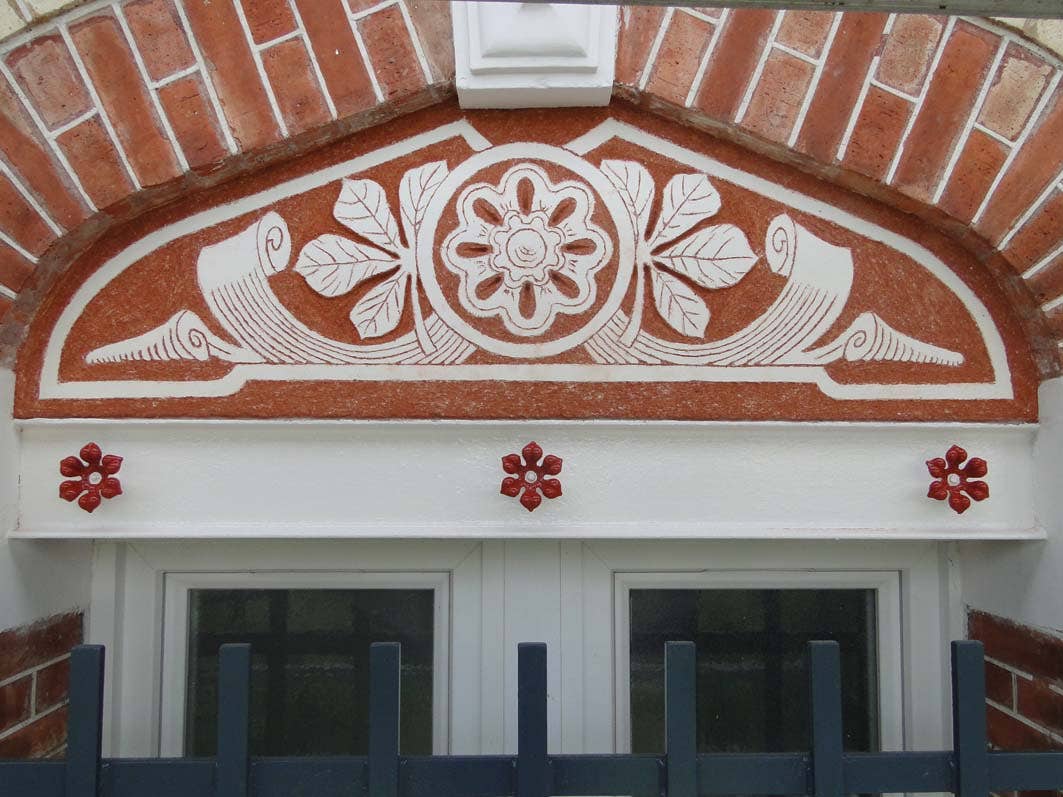
Patrick Webb
The Existential Craftsman
From time immemorial people have contemplated the nature of being and likewise the concept of origins or the coming into existence. Such contemplations have often coalesced into the core structure of religious systems of belief and correspondingly within the branch of philosophy known as ontology or "the study of essence." Existentialism is a relatively recent focus within ontology that centers around the human individual's concept of being and becoming. Prevalent themes are authenticity and individual creation of meaning, themes that find resonance with traditional craftsmanship. Craftsmen are typically concerned with the authenticity of their creations, whether or not the crafted objects truly retain the expression of their will, as an artifact of their touch. Similarly, there exists a trepidation that their work might be viewed as inauthentic or worse still, meaningless. I would like to consider if there is any potential for intrinsic meaning in craft, how craftsmen use symbolic meaning, and a particularly modern dilemma threatening craft, the absurd.
Intrinsic Meaning
Let's begin by an illustration of a flower. What does it mean? "Well, it doesn't mean anything, it just is!", one might reasonably reply. A flower certainly doesn't mean something else, it doesn't refer to anything. However, I wouldn't hastily conclude that a flower is meaningless. Perhaps we could consider whether a flower has inherent meaning or stated another way, the flower is its own meaning. As humans we're well adapted to this qualitative, inherent meaning of the natural world. A flower will elicit sensual responses of sight, smell, feel, and sometimes even taste (with or without further hallucinogenic effect). In this way flowers are intuitively sensible to human beings, even by very young children. Contrast this naïve, direct, visceral sensibility with the literal meaning of a flower as defined by the American Heritage Dictionary: "The reproductive structure of angiosperms, characteristically having either specialized male or female organs or both male and female organs, such as stamens and a pistil, enclosed in an outer envelope of petals and sepals."
So, the "literal" meaning of flower becomes quite complicated and contingent on other literal meanings whilst our direct experience of a flower remains simple and accessible. Would a botanical that is to say scientific analysis of a flower reveal further or perhaps deeper meaning? We've been at the classification of flowers in general and particular for some centuries now with infinitely greater means of dissection from the cellular, to the DNA, to the now subatomic level with promising theories to take us even further. So it is that a single flower is now classified amongst the most complex things in the universe composed of levels of complexity ad infinitum. We lament the complexity of the material world losing sight of that fact that we're the ones who keep cutting it to pieces. Flowers are simple yet rich in meaning. However, ascribing meaning to them in artificial, closed, conventional systems of literal and scientific terms has made them unintelligible to the point of absurdity. How does one ever feel at home in a world like that?
A few summers ago I had opportunity to work on a project of traditional masonry in the small village of Hundisburg, Germany. What do traditional, handcrafted villages like this and others mean? They don't refer to anything outside of themselves yet you just feel that the village itself is rich in meaning, it's authentic. What is physically embodied in my Hundisburg example is successive generations of human intention and attention, humans being humane. The oaks of the timber framing from adjacent fields cleared for cultivation. The stone from the local quarry now the summer swimming hole. The bricks and terra cotta tiles from a clay deposit up on the hill. Crafting a community with our neighbors from materials readily available around us is an eminently human activity, nothing absurd about it.
Symbolic Meaning
There is of course meaning that refers to something outside of itself. In fact, that this is how the term "meaning" is most often used and understood. One way for a craftsman to express symbolic meaning is with ornament, alternatively called enrichment. There are a number of methods for achieving this: carving, scratching, moulding, painting to name a few.
We appreciate that artistic representation is only a symbol, a reference of something else. Ornament's power lies in human sympathy. The craftsman draws upon the fractal attributes of say, a flower to select a handful of attributes, the essence of the thing to convey in the selected medium. And so when you or I look upon the ornament we "get it", otherwise stated we sympathize with the process. If we have familiarity with the medium we might even begin to imagine ourselves doing the carving, painting or what have you. Likely it heightens our appreciation for the craftsman's imagination and skill. Yet just having fulfilled human beings as embodied in the example of the craftsman are of tremendous benefit to a community. Furthermore, when these investments in intrinsic and symbolic meaning are made in the shared public realm (church, high street, piazza, etc.) as they customarily were, than an inheritance is established for everyone, an enriched community that loves itself, that feels at home.
The Absurd
The kind of life that established traditional villages around the world, many of which still remain for our enjoyment, seem like an impossibility today, a eutopian fantasy. What is the absurd? How has meaning been undermined by civilized society?
Coercion
In its most virulent forms, we find enslavement and serfdom. Great works of beauty like the Parthenon celebrate idealized human perfection, overlooking a city that was the birthplace of democracy. And yet much of this was built on a foundation of war, misery and exploitation. There is an unresolved tension between the rich symbolic meaning of many such cities and monuments of antiquity and the inhumane treatment, the destruction of the intrinsic meaning and worth of the individual. The skilled craftsman reduced to a tool himself to express the will of monsters.
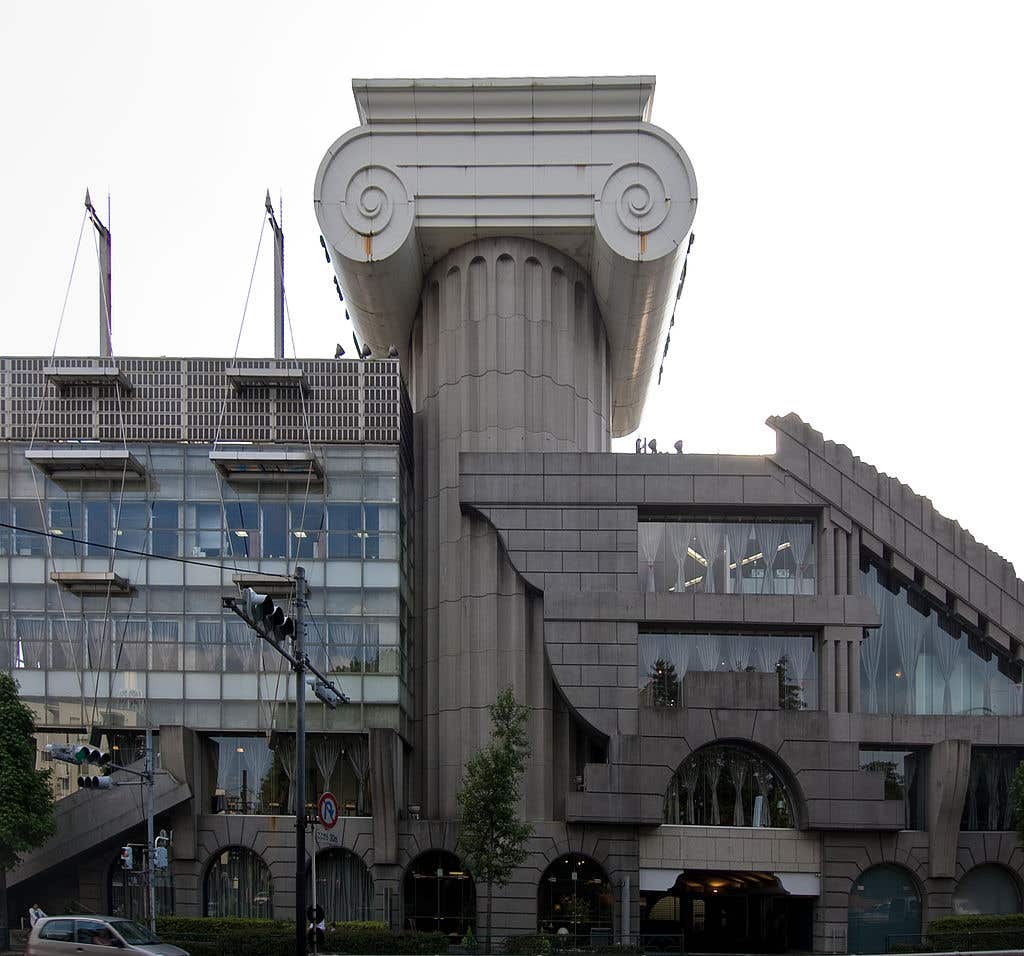

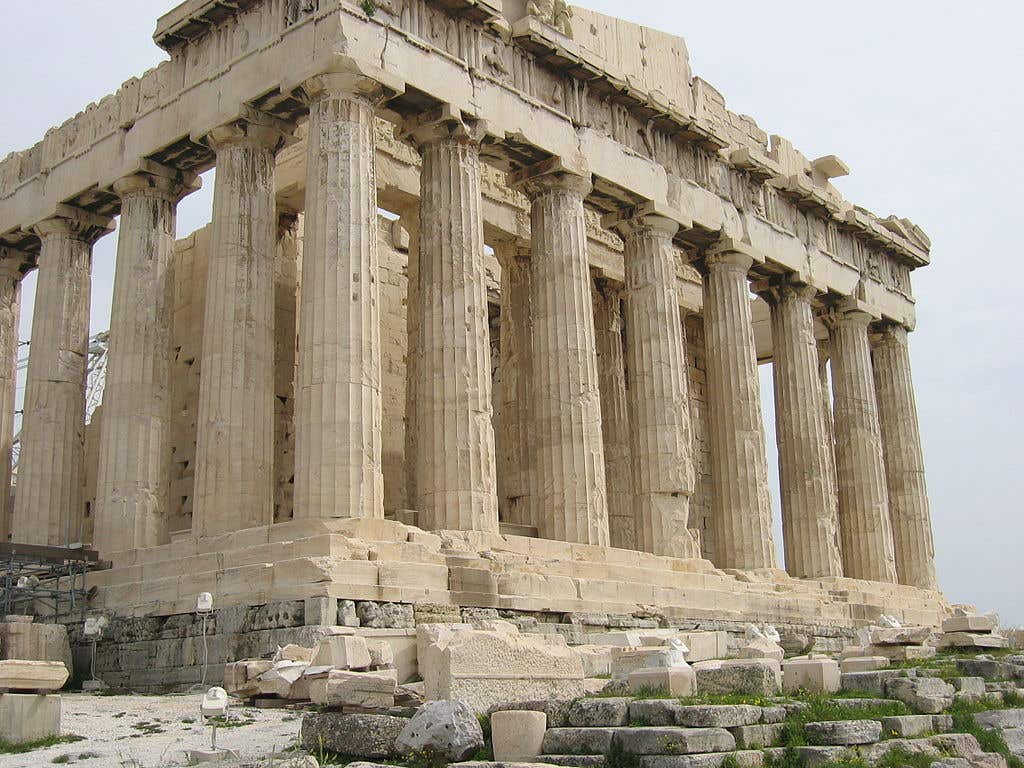
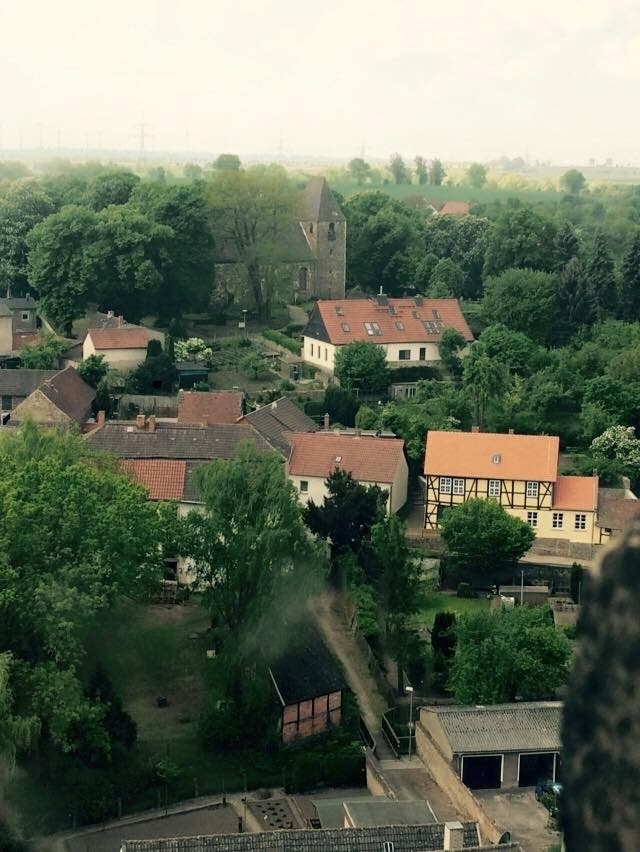
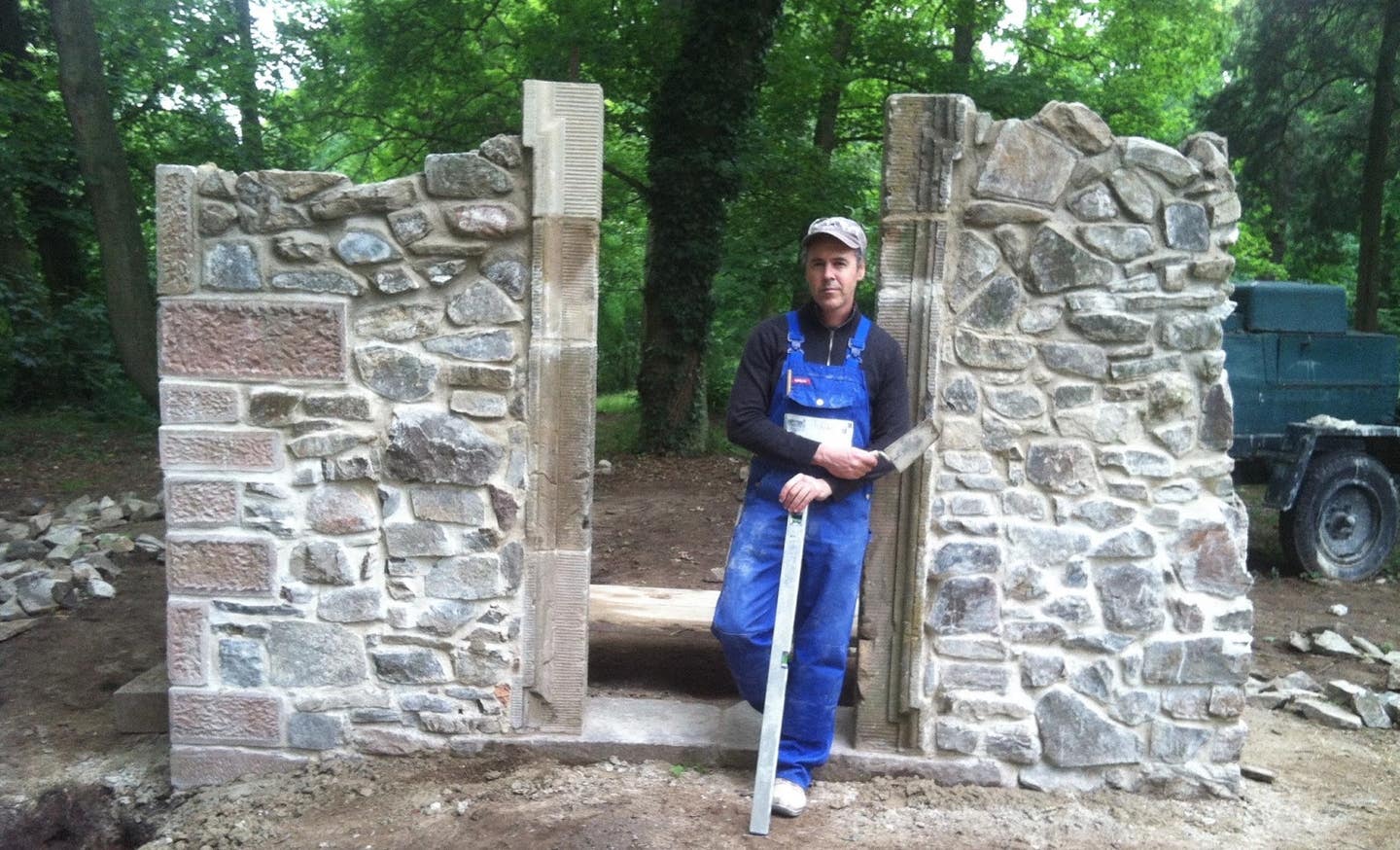
Dishonesty
Nothing corrupts meaning like a lie. The McMansion puts its dishonesty on display like a proud peacock. It pretends to use local, traditional materials; all materials are industrial from a factory far away. It pretends to be finely crafted; it extracts the cheapest labor from the most vulnerable in society. It promises you health and status; it delivers toxicity, debt and mediocrity.
Subversion
A very visible manifestation of subversion is irony, typical of Postmodernism. Often a form is taken an exemplar of tradition and hand-crafted refinement. The proportions are changed, the function inverted, traditional materials and methods are replaced with the latest in construction tech. To its credit Postmodernism doesn't lie. Rather, it ridicules intrinsic meaning as an impossible joke.
Existentialism has been interpreted by some as an individualistic philosophy, described as isolating or inward looking. However, I would contend that being an individual has no meaning independent of others any more than individuality is possible without the air you breathe. It is modern civilization that is isolating with its increasing manifestations of coercion, dishonesty and subversion: the absurd. Two main tenets of existentialism that I did not develop here were that the individual is free and is responsible. This is very empowering. We can choose to reject absurdity, instead embracing lives of intrinsic and symbolic meaning. Perhaps it is in this time of crisis for humanity that our living a life of individual meaning can have the greatest impact on intrinsic meaning for human society at large.
My name is Patrick Webb, I’m a heritage and ornamental plasterer, an educator and an advocate for the specification of natural, historically utilized plasters: clay, lime, gypsum, hydraulic lime in contemporary architectural specification.
I was raised by a father in an Arts & Crafts tradition. Patrick Sr. learned the “decorative” arts of painting, plastering and wall covering as a young man in England. Raising me equated to teaching through working. All of life’s important lessons were considered ones that could be learned from the mediums of tradition and craft. I found myself most drawn to plastering as I considered it the richest of the three aforementioned trades for artistic expression.
This strong paternal influence was tempered by my grandmother, Geraldine Webb, a cultured, traveled, well-educated woman, fluent in several languages. She made a point of instructing her young grandson in Spanish, French, formal etiquette and opened up an entire worldview of history and culture.
After three years attending the University of Texas’ civil engineering program with a focus on mineral compositions, I departed, taking a vow of poverty, living as a religious aesthetic for a period of seven years. This time was devoted to clear reasoning, linguistic studies, examination of world religions, exploration of ethics and aesthetics. It acted as a circuitous path leading back to traditional craft, now imbued with a deeper understanding of interconnection in time and place. I ceased to see craft as simply work or labor for daily bread but among the sacred outward expressions of the divine anifest
within us.
From that time going forward there have been numerous interesting experiences. Among them study of plastering traditions under true masters here in the US as well as in England, Germany, France, Italy and Morocco. Projects have included such high expressions of plasterwork as mouldings, ornament, buon fresco, stuc pierre, sgraffito and tadelakt.
I’ve been privileged to teach for the American College of the Building Arts in Charleston, SC, where I currently reside and for the Institute of Classical Architecture & Art across the US. “Sharing is caring” – such a corny cliché but so true. I hardly know a
thing that hasn’t been practically served to me on a platter. I’m grateful first of all, but now that I might actually know a few things, it becomes my responsibility to be generous as well.








